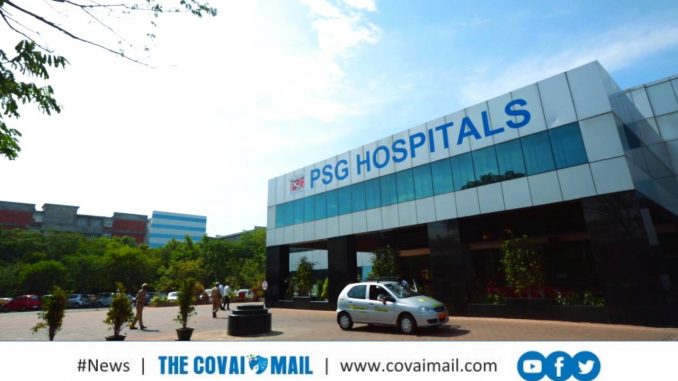
World Stroke Day – Oct 29th

PSG Hospitals has been one of Coimbatore’s most sought-after hospitals primarily because of one reason – Quality Health Care at Affordable price. The hospital has been catering to the healthcare needs of the people from various parts of Tamil Nadu and beyond for decades.
For this year’s World Stroke Day, The Covai Mail spoke with a few of the doctors belonging to the Neuro-Departments at PSG Hospitals to get our questions about Stroke answered. We received many credible information and insights from the doctors who have valuable experience in treating stroke.
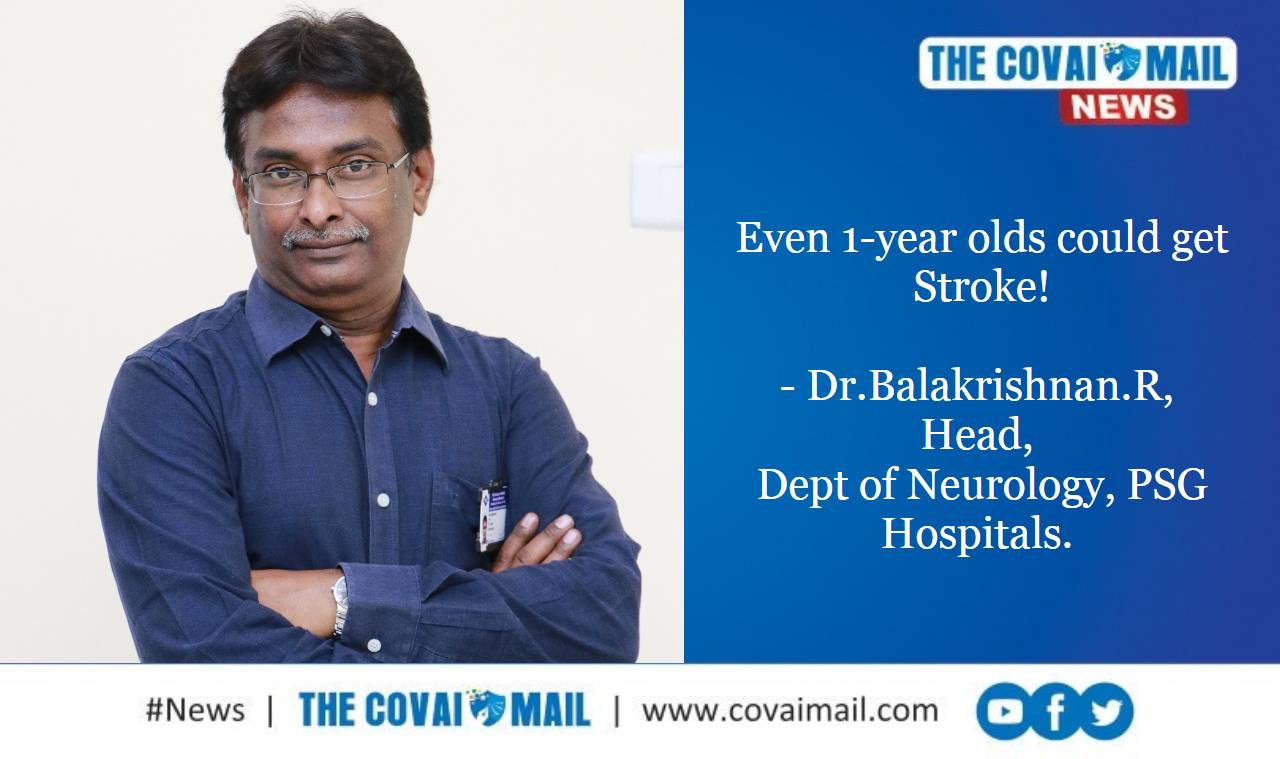
Even 1-year olds could get Stroke!
– Dr.Balakrishnan.R, Head, Department of Neurology, PSG Hospitals.
What is Stroke?
When the blood-flow to the brain is affected because of blockage (due to blood clots) or leakage in the blood vessels (due to rupturing), it cuts off the functionalities of the brain, that leads to certain impairments. This is called as Stroke.
Who can suffer Stroke?
As a person ages, the risk of stroke increases. People with diabetes, abnormal blood-pressure, obesity, cardiac ailments and cholesterol issues should be careful because they are most likely to be affected by Stroke. Men have higher chances of Stroke risks than women. But at some occasions, children and kids even at 1 years of age, may also get affected by Stroke.
Symptoms of Stroke
The common symptom people immediately think about Stroke is the paralysis of hand or leg, but beyond that blurred vision, slurred speech, light-headedness, difficulty to swallow food/liquid, facial paralysis, numbness of leg & hand and dizziness also qualify as stroke’s symptoms.
What to do immediately?
If a person is found to be affected with Stroke with these symptoms, then immediately he/she should be taken to a hospital. A scan will be made at the hospital to identify whether the Stroke is Ischemic (Strokes due to blood clots) or Hemorrhagic (caused when blood from an artery begins bleeding into the brain). 80 in 100 people with Stroke suffer Ischemic Stroke.
When it is confirmed that it is not Hemorrhagic, if an injection (Alteplase or Tenecteplase which are quite costly but life-saving) to disperse the clots and return the blood-flow is given to patients in under 4.5 hours of incidence, there is higher level of chances to immediately help the patients get relief from the paralysis and other impacts.
It is very important that the family-members of this person take him/her to the hospital immediately and see if he/she is eligible for getting this injection. In case if the injection is not facilitating any relief, then the help of an interventional radiologist is sought who will provide his expertise in this regard.
Physiotherapy & Psychological Care – very crucial
Post the treatment, patients should take medicines on time and it should not be stopped at any point of time. The patients should take physiotherapy treatment to help their body’s motor abilities get back to normality. They may face social problems and they will be in need of psychological support. So family-members of the patients should be very mindful of them and provide support. What all should know is that the second occurrence of stroke can be deadly. That should not be allowed to occur at any cost.
In recent times, many in the field of medicine and health care say that the tendency for the blood to clot is increasing in patients infected by novel coronavirus. This also creates way to get affected by Stroke. So we need to exercise caution and be very careful during these times.
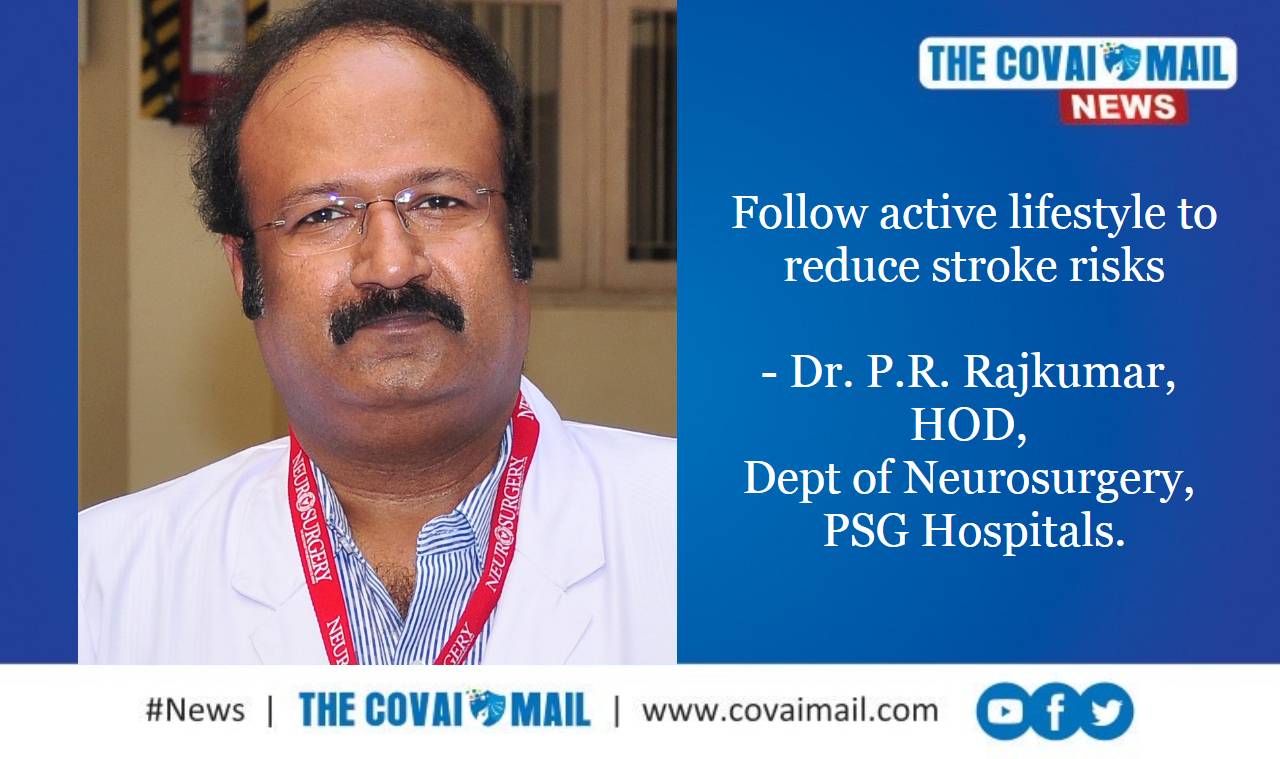
Follow active lifestyle to reduce stroke risks
-P.R. Rajkumar, HOD, Department of Neurosurgery, PSG Hospitals
World Stroke Organization (WSO) says that this year 14.5 million people will suffer a stroke on a global basis and 5.5 million people will die as a result.
WSO’s mission is to reduce the global burden of stroke through more effective prevention, better treatment and long-term support.
A stroke can happen to anyone, at anytime, anywhere. 1 in 4 adults will have a stroke in their lifetime. Stroke is a leading cause of death and disability worldwide, but almost all strokes could be prevented. Being active helps to reduce our risk of stroke
Every year on October 29th, World Stroke Day is observed to create awareness about stroke. This year, WSO suggests all to take part in its awareness campaign by showing their dance moves and share it with their friends and family, and inspire them to dance and be active.
In Coimbatore, PSG Hospitals has been continuously providing excellent care for stroke. It must be mentioned that our stroke centre is a centre of excellence accredited by World Stroke Organisation. Our hospital has a structured stroke setup with team of doctors from Emergency Medicine, Neurology, Interventional Neuroradiology and Neurosurgery.
The hospital also has well equipped physiotherapy department for long term support of stroke patient rehabilitation. PSG Hospitals always cherishes with scientific, ethical, quality and personal patient care.
For this year’s World Stroke day, I request you all to be active in your life to reduce your stroke risk.
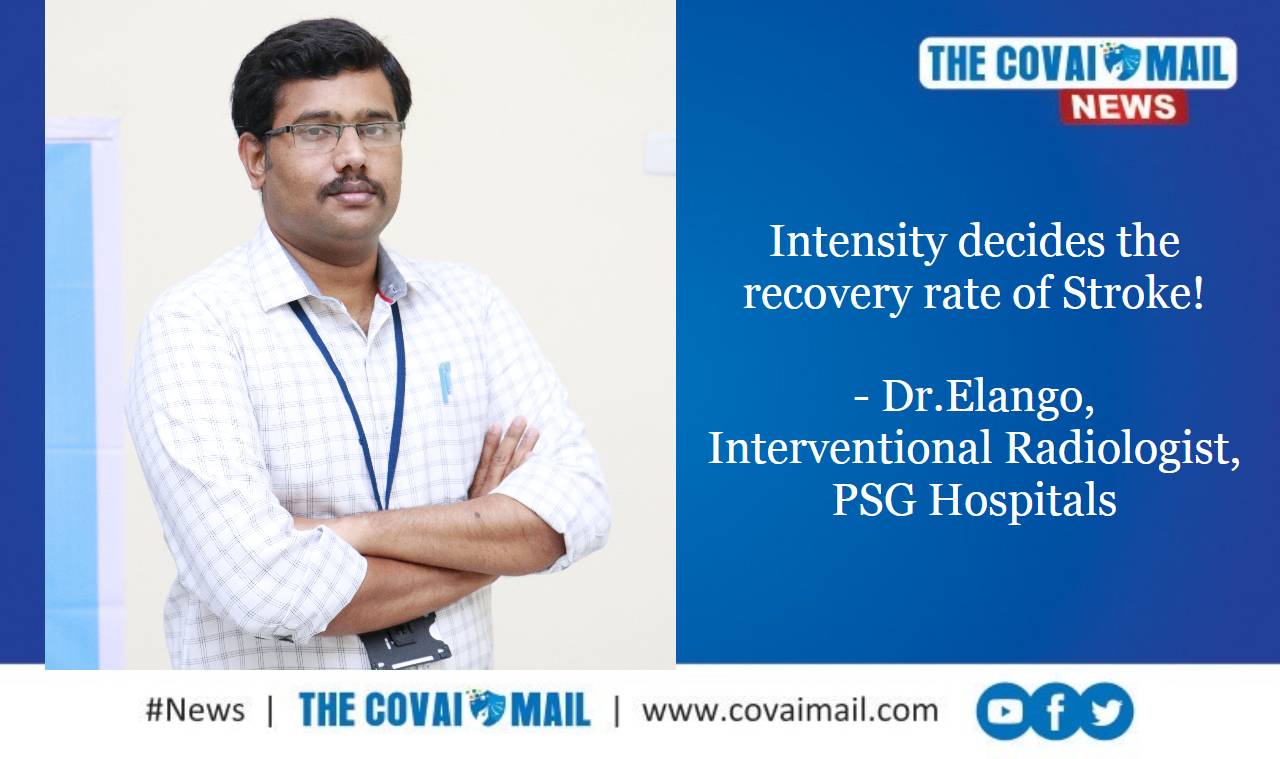
Intensity decides the recovery rate of Stroke!
– Dr.Elango, Interventional Radiologist, PSG Hospitals
Using the guidance of medical imaging equipment, minimally invasive procedures (performing a procedure via Pin hole without any incisions or scar) are done by Interventional Radiologists.
When is our services needed?
When the Stroke is found to be at a serious level due to blood clots in large vessels of brain, that patient is in need of our help. If the Stroke is identified as Haemorrhagic (bleeding inside the brain), then the Neurosurgeon’s expertise should be consulted.
For patients with Ischemic Stroke, the thrombolysis injections can be given only before four-and-half hours from the time of Stroke attack. Once that time is exceeded or if any large vessels are blocked , interventions need to be done . Majority of stroke cases are ischemic and the clots could be identified via imaging equipment using interventional procedures.
Stroke care by Interventional Radiologist
By making a tiny incision at the apt region of the body, the interventional radiologist will insert a catheter into the artery and with the help of the imaging equipment, will find the blocks and clear them, thus helping in resuming of brain’s activities.
For minor strokes, medicines would do the work but for serious cases or patients with bigger blocks, our help will be sought. Finding the type of Stroke – whether Ischemic or Haemorrhagic- is very important to determine the type of treatment. CT and MRI scans are used for this purpose
Recovery depends on stroke’s intensity
Patients’ recovery is based on the intensity of Stroke and time of admission to hospital after the incidence of Stroke. If they come earlier, further damages to the brain tissues could be avoided and the treatment could be started before the critical level. So the patients will respond to treatment much better.
For instance, if patients arrive soon after the impact and if their brain tissues are not badly affected, immediately after treatment they can recover. But if they arrive after 12 or 24 hours, the impact is immense and recovery will be gradual.
A Team Effort
At PSG Hospitals, we provide 24/7 support to identify the Stroke and start treatment. CT Scan and MRI Scan will be taken at immediately when a stroke patient is brought here. We follow a system where if a patient with Stroke arrives here, in just 10 minutes that patients will be shifted to the scanning area and will be given the report. The Neurologist, Neurosurgeon and Interventional Radiologist here will discuss about the kind of treatment that should be provided and it will start very quickly, so that life could be saved much earlier.
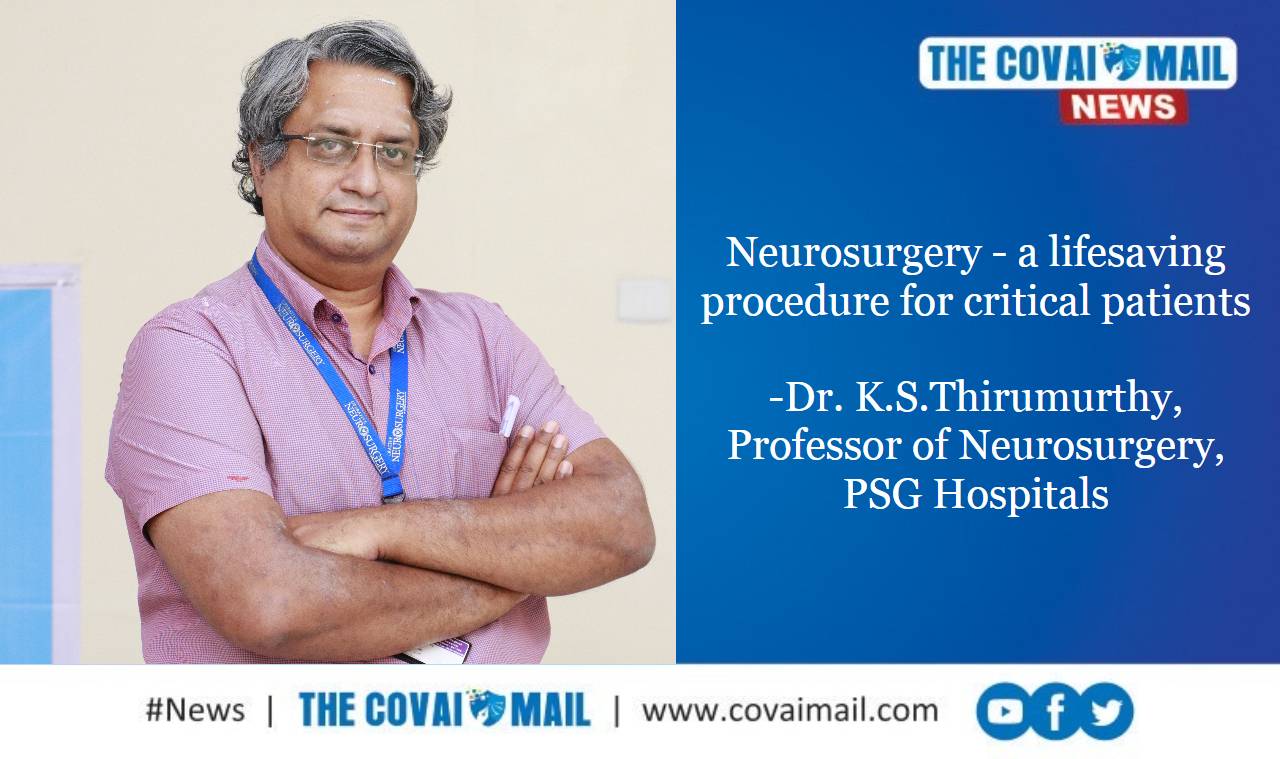
Neurosurgery – a lifesaving procedure for critical patients
-Dr. K.S.Thirumurthy, Professor of Neurosurgery, PSG Hospitals
Neurosurgery’s requirement arises when Stroke is caused due to internal bleeding/leakage of blood in the brain vessels. Patients with Hypertension, people with heart problems who are taking blood-thinning medications or antiplatelets, aneurysm, AV malformations may also get haemorrhagic stroke.
In most Ischemic Stroke cases, medicines and interventional radiology would be enough if the patient reaches hospital earlier, before the stroke has evolved completely. In case if the blood clots could not be removed/dissolved using either medicine or through intervention, then the need for surgery arises due to completely evolved stroke causing raise in intracranial pressure which causes brain dysfunction and sometimes less to death due to brain stem compression.
The pressure on the brain should be removed
When the clots are creating pressure inside the brain, it may lead to lethal complications and even death. So when we ascertain that the condition is getting worse, we will have to do a surgery called decompressive craniectomy. This is done to remove the pressure on the brain.
Likewise, when the leakage of blood (haemorrhagic stroke), this to leads to built-up of pressure inside the brain. For such patients, the surgery is done to remove the clots and also removal of bone to achieve brain relaxation. For patients with AV-Malformations and aneurysms in brain, our interventional radiologist and neurosurgeons jointly work to provide best care on case by case basis.
We need patients’ extended co-operation
Depending on the damage to the brain and nervous system, the surgery’s recovery will be estimated. Mostly we get severe-case patients – when they arrive, their hands, legs and face remain paralyzed by the Stroke. There is very little movement.
So at those times, we do surgery to save their lives first. Only if there is life in the body, then there can be improvement of life. First we try to save the patients’ lives and then our team of neurologists, physiotherapists provide professional help to them for further recovery.
Value of PSG Hospitals
The Stroke Center at PSG Hospitals has received accreditation from World Stroke Organization as a Center of Excellence. We function as a team consisting of Neurologist, Radiologist, Neurosurgeons and Interventional Radiologist. We have multi-specialty departments here and so we can determine the right treatment modality clearly and provide the best treatment for stroke with support from all the needed disciplines for Stroke Care.
A Request to public
Post the surgery, the patients will have the desire to return to normal life and work. For that they need to take medicines, physiotherapy and vocational training. They should do the follow-ups – the doctors recommend, to increase their quality of life after the treatment. As far as stroke is concerned, the most important thing all should know and share with friends and family is that the affected person needs to be brought to the hospital on time within the golden hour to get the best outcome.
